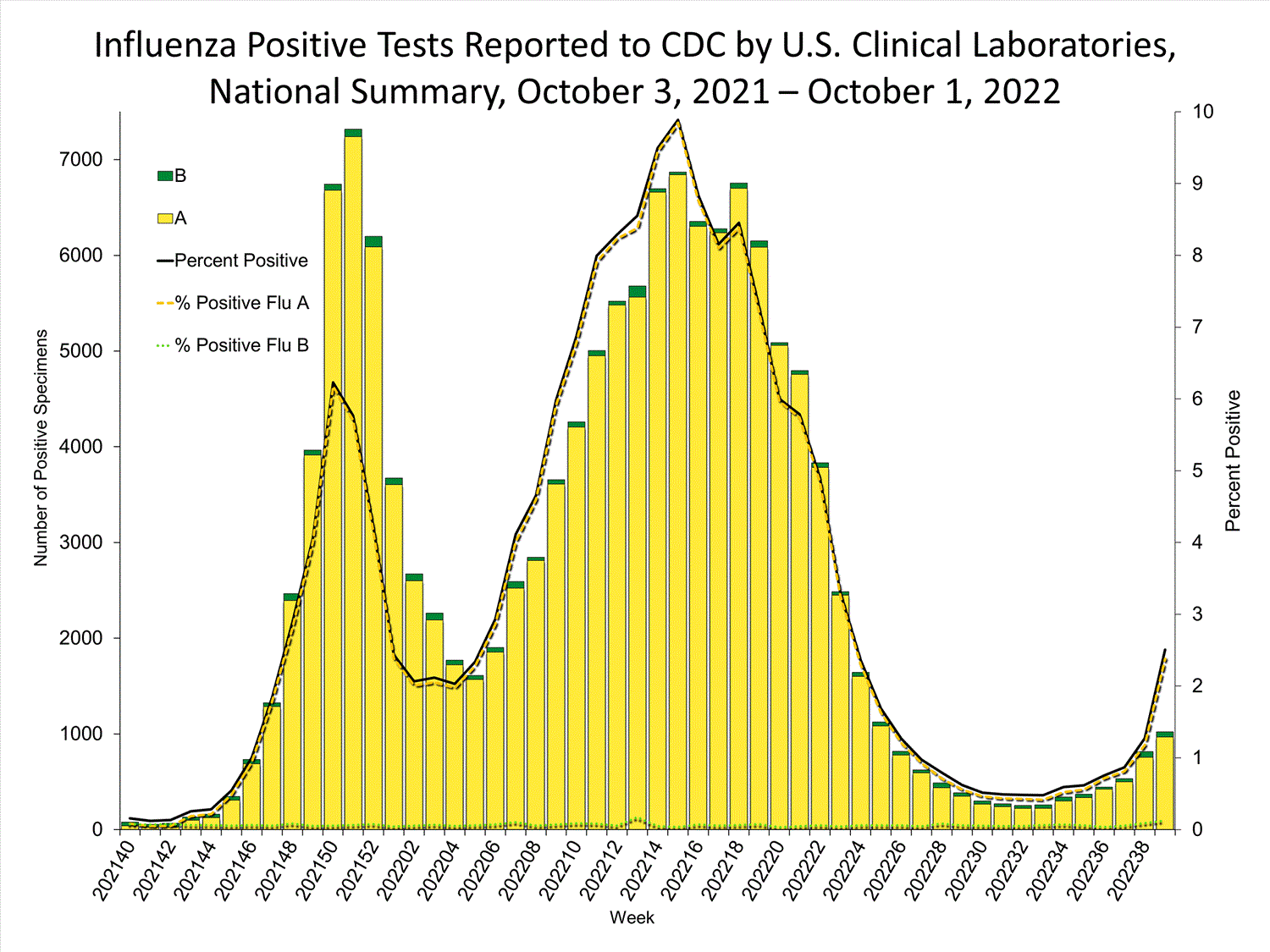What is “Flurona,” and Why it Should Concern us?
- Venkat Rao
- Oct 11, 2022
- 5 min read
Authored by Venkat Rao
Early in 2020 an unvaccinated teenager in Los Angeles tested positive for Flu and COVID-19 infections at the same time. This was followed by reports from Texas, Florida, Israel, Brazil, the Philippines, and Hungary of individuals co-infected with SARS-CoV-2 and Flu virus. The Israeli Outbreak Management Advisory Team came up with the catchy expression, “Flurona” to describe the potential of simultaneously contracting flu and COVID-19.
Should we be concerned about Flurona?
When an individual is infected with two or more disease-causing organisms at the same time, the condition is referred to as co-infection. From surveillance reports, contracting both flu and COVID-19 appears to be less common. According to a recent report, only 0.4% of cases were reported of influenza co-infection with COVID-19 positive patients. Public health officials generally do not regard flu cases among COVID-19 positive patients as a serious threat. On the contrast, risk exists for intense transmission of pathogens in communities reporting flu and COVID-19 and other upper respiratory tract infections.
Published evidence portray another more serious dimension of Flurona. A recent meta-analysis of 11 studies by Iranian scientists covering 3,070 patients with COVID-19 and 79 patients co-infected with Influenza and COVID-19 indicated co-infection prevalence among men and women as 5.3% and 9.1%, respectively.
Based on data from USA, China, Iran, Japan, Spain, France, Italy, Switzerland, and Brazil, prevalence of Flurona could be as high as 1.2 percent. A key issue here is the quality of data and diagnosis to distinguish flu from COVID-19 and other common upper respiratory tract infections, since many clinical symptoms are common among these diseases, requiring a more detailed clinical assessment to delineate whether the case is influenza, COVID-19, or Flurona. Clinical symptoms such as fever or chills, cough, high core-body temperature, shortness of breath, difficulty breathing, fatigue, sore throat, congestion or runny nose, muscle or body aches, headache, nausea, or vomiting are reported both for COVID-19 and influenza patients. Upper respiratory tract infection presents similar clinical symptoms as well.
Flurona may be less prevalent, but co-infection with COVID-19 and influenza presents a serious threat to high-risk individuals, the elderly and other sensitive population groups. It is unclear if the reported rise in flu cases in the 2021-2022 is in part due to SARS-CoV-2 virus in circulation and Flurona.
Once a person is infected with SARS-CoV-2 virus, it becomes the predominant viral load superseding other respiratory viral infections such as influenza. As a result, most hospitalization, and fatalities in a COVID-19 inter-mingled with influenza cases were attributed to the former in the death certification. Nevertheless, influenza continues to be a major public health disease burden in the United States. Has the seasonal dynamics of flu changed due to COVID-19? Let us explore:
Why are we witnessing a rise in flu cases throughout 2021-2022?
The flu season in the United States starts now, early October with most cases reported in December through February. According to the US Centers for Disease Control and Prevention (CDC) estimates the flu season burden for October 2021 to June 2022 was 8 to 13 million confirmed flu cases, 3.7 to 6.1 million hospital visits, 82 to 160 thousand hospital visits and 5,000 to 14,000 flu deaths.
Influenza accounts for 7 percent of all acute lower respiratory tract infections in the world and 4 percent of deaths due to acute lower respiratory tract infections in children younger than 5 years.
Interestingly, we are continuing to witness a rise of flu cases in the 2021-2022 season.
Without the seasonal ebb and tide in flu cases, influenza cases are reported in the United States throughout 2022. Hospitals reported flu cases and hospitalization through 2022 spring and the summer seasons, which is rather unusual. According to the CDC’s October 1, Weekly US Influenza Surveillance report, flu virus continued to circulate and remained active in most parts of the country.
Current flu season appears to be the most prolonged, according to the CDC surveillance report, which began around November 2021 and cases continue through now. With the onset of October seasonal cycle, it appears flu cases were reported throughout the year without an interruption in the seasonal cycle.
CDC mortality surveillance data for the week of October 6, indicates 8.8% deaths due to pneumonia, influenza and/or COVID-19, which is significantly higher than the 5.7% threshold predicted for this week. Of the 2,034 deaths reported for this period, nearly half (48%) of the deaths were attributed to COVID-19 and not due to influenza as the underlying cause of death on the death certificate.
COVID-19 may be altering the seasonal dynamics of flu
The dominant strain of flu virus in the current season is listed as H3N2, which the approved flu vaccine is formulated to protect against. A serious shortcoming is that nearly 20 million fewer doses have been administered by start of 2022 compared to one year earlier, rendering large numbers of at-risk population vulnerable to contracting flu.
Researchers are pointing to a confluence of factors contributing to the rising cases of flu in the current season.
According to some researchers, higher reported cases of influenza in the 2021-22 season is due to waning of population-level immunity from dramatic decline in the number of influenza cases during the COVID-19 pandemic. Masking, social distancing and school closures during the peak of COVID-19 resulted in dramatic fall in influenza cases, but when these containment measures were relaxed in 2021 all over the world, influenza and other upper tract respiratory illnesses returned with a vengeance with disease predictive models indicating potentials for nearly half a million more influenza related hospitalizations this winter, compared to a normal flu season. The 2021-22 influenza is predicted to be more severe compared to normal flu season with 600,000 hospitalization which is 100,000 more than a normal season.
These models predict the need to get at least 75% of Americans vaccinated against flu in the current season, compared to the typical 50% to avoid additional cases of influenza and hospitalization. The lower-than-normal levels of flu vaccination in the current season portends to a severe disease outcome, its consequences, and attendant costs.
Normal flu seasons confers a degree of population-level immunity that gets carried through to the next cycle. An unexpected vulnerability to influenza was introduced due to mask, safe-distancing, and school closure mandates at the peak of COVID-19 pandemic as a result of which we saw a dramatic drop in flu cases in 2020-21. With COVID-19 mandates generally behind us and return to normal routine, US population is left with lower or no natural immunity conferred by normal flu seasons, resulting in extended flu seasons and rise in the number of influenza cases.
A higher-than-normal level of flu vaccination may be required to combat current aberration of rise in number of influenza cases. A research report published in today’s The Lancet, indicates the benefits of flu seasonal vaccinations, particularly this season, with even a partially vaccinated children were at lower odds of admission to ICU and attenuation of the intensity of influenza in children. This is particularly significant since children younger than 5 years are among the population group at risk for severe illness. The other vulnerable population groups include pregnant women at any stage of pregnancy and older adults (aged 65 years and above) and people with chronic medical conditions.
Other unknown reasons could be causing disruptions to normal flu seasons cycles, but what appears to be the most effective preventive measure at this point is to take flu shots and observe normal hygiene practices that have come into place since the advent of COVID-19. Do not forget to take the flu shots.









Everything you write and present is a very unique learning tool. Thank you.